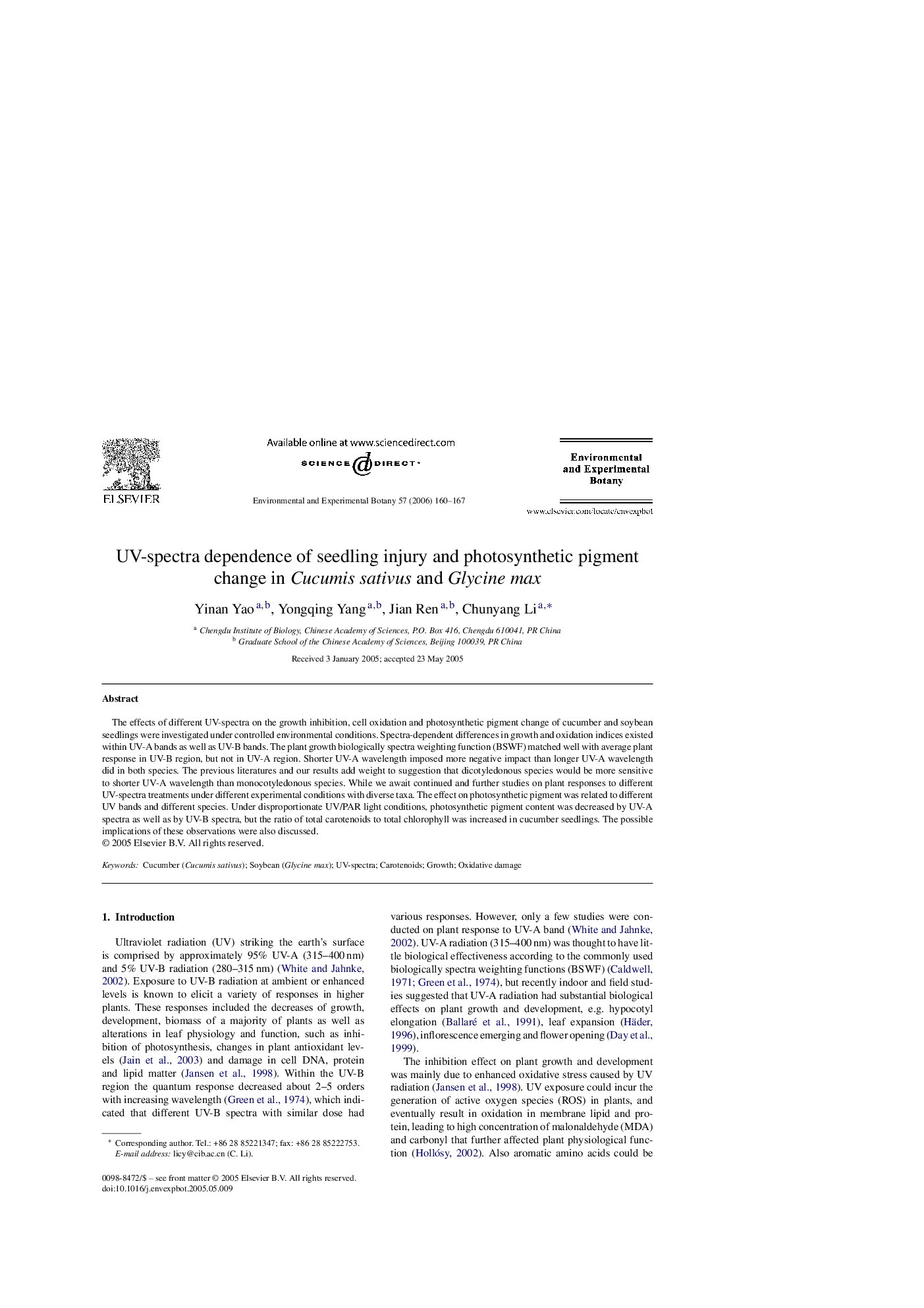| Article ID | Journal | Published Year | Pages | File Type |
|---|---|---|---|---|
| 4555578 | Environmental and Experimental Botany | 2006 | 8 Pages |
The effects of different UV-spectra on the growth inhibition, cell oxidation and photosynthetic pigment change of cucumber and soybean seedlings were investigated under controlled environmental conditions. Spectra-dependent differences in growth and oxidation indices existed within UV-A bands as well as UV-B bands. The plant growth biologically spectra weighting function (BSWF) matched well with average plant response in UV-B region, but not in UV-A region. Shorter UV-A wavelength imposed more negative impact than longer UV-A wavelength did in both species. The previous literatures and our results add weight to suggestion that dicotyledonous species would be more sensitive to shorter UV-A wavelength than monocotyledonous species. While we await continued and further studies on plant responses to different UV-spectra treatments under different experimental conditions with diverse taxa. The effect on photosynthetic pigment was related to different UV bands and different species. Under disproportionate UV/PAR light conditions, photosynthetic pigment content was decreased by UV-A spectra as well as by UV-B spectra, but the ratio of total carotenoids to total chlorophyll was increased in cucumber seedlings. The possible implications of these observations were also discussed.
